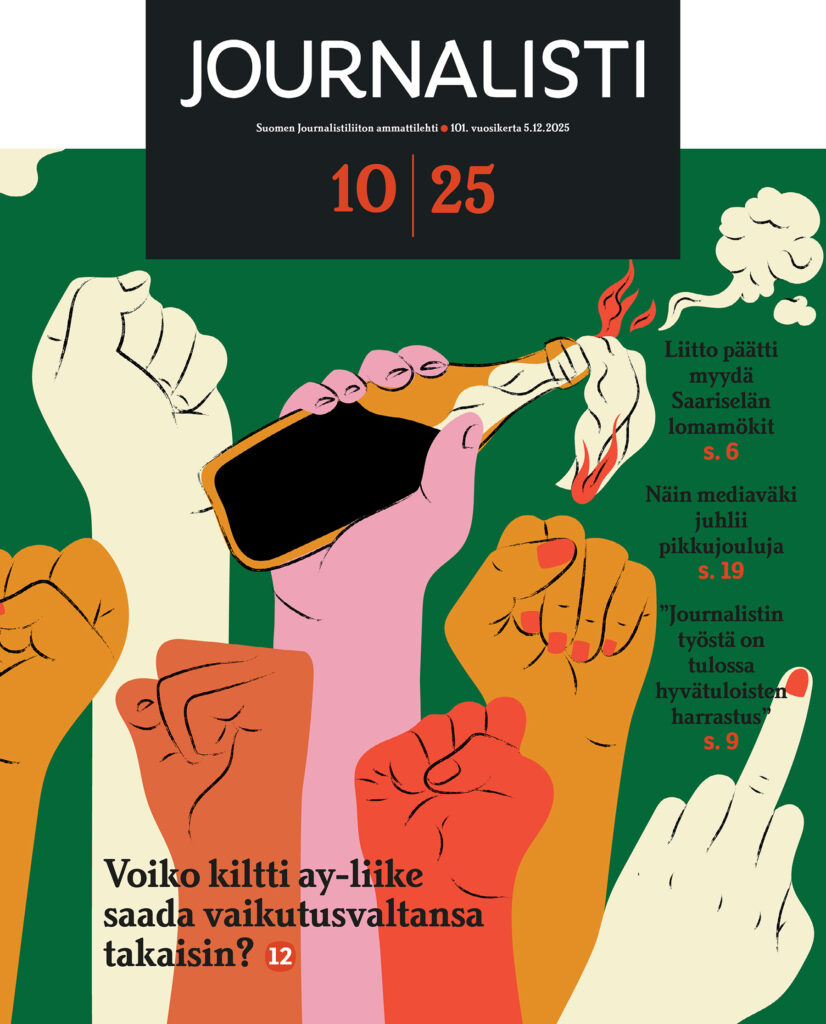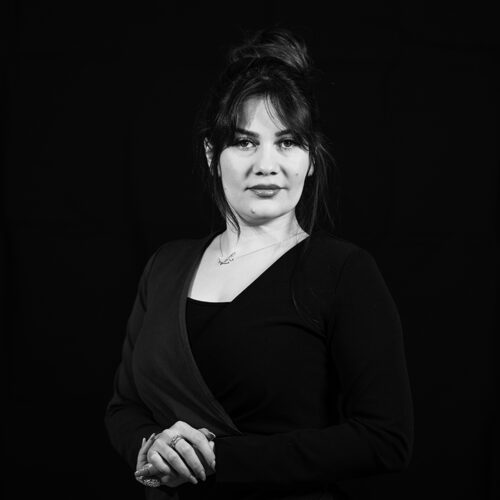As we celebrate 100 years of UJF Journalisti magazine celebration, it it’s crucial to highlight the importance of Arabic journalists in the Finnish media. We Arabic-speaking journalists voluntarily support our communities and collaborate with the local media. Despite our efforts, the media doesn’t pay attention to our contribution.
Arabic is one of the top foreign native languages in Finland. Arabic-speaking journalists serve as a vital bridge for immigrant communities to integrate into society and provide reliable information. Arabic-speaking journalists often go unrecognized in Finnish media and immigration sectors.
Many of us use platforms like Facebook and YouTube to support Arabic-speaking communities, without payment. For instance, in 2018, both Yle and Helsingin Sanomat covered our work, but challenges such as limited funding and support persist.
As a TV presenter and broadcaster, I persisted in journalism despite many challenges. I moved from Iraq to Finland in 2015. After two years of living in Finland in 2017, Arabic-speaking friends and I started a Facebook page voluntarily to help newly arrived asylum seekers and refugees to get information in Arabic.
Our main aim was to support the Arabic-speaking immigrant communities by providing a news program that translated Finnish news into Arabic language to help them integrate into society and overcome language barriers, as well as to combat misinformation.
Additionally, we sought to bridge the gap between the Arabic-speaking communities and Finnish society, and to tackle the major problems of cultural misunderstanding on both sides.
Later, our group grew to more than 20 volunteers, almost all of us exiled journalists, photojournalists, and videographers forced to flee our countries. We expanded our work to Facebook Radio FM Espoo International, which is a TV stream combined with Facebook, one of the first Arabic-speaking TV channels. It provided daily news and other programs, streamed for six hours a day.
Our coverage included current news, immigration issues, entertainment, and quotes from local media outlets like Helsingin Sanomat, STT, and Yle until 2021. We still have thousands of followers, with up to 200,000 viewers. We tried several times to get a grant to continue our work and pay the expenses of rent, equipment, and the salaries of journalists, but we did not get the grant. Despite our efforts, the lack of funds has led to temporary halts in our operations.
Virtual communities like the Finnish Affairs Facebook page, established seven years ago, have become vital for immigrants to access essential information. It works to this day to provide translation of news and dissemination of information and Finnish affairs for Arabic speakers. Many immigrants living in Finland follow news and programs from their home countries.
In 2020, amidst the COVID-19 pandemic, I joined YLE, to broadcast pandemic-related information in multiple languages, including Arabic. This marked a pivotal moment, underscoring the significance of multilingual coverage and the critical role it plays in ensuring the safety of all residents.
The diversity within the immigrant community, spanning various religions and cultures, presents challanges for fair representation in media coverage.
The backdrop of my journey aligns with the broader narrative of immigration to Finland, particularly the influx of Middle Eastern immigrants in 2015. Fleeing war-torn Syria and the menace of ISIS in Iraq, these immigrants sought refuge, driven by the pursuit of safety for themselves and their children amid dire political conditions.
However, media coverage introduced its own set of challenges in reporting migration issues. For instance – as seen in the Oulu immigrant rape case – when immigrants are convicted of crimes, the media, in some ways, portrays certain immigrant groups, particularly Middle Eastern men, as criminals. It has become clear that these cases do not stand for all immigrants, leading to a collective pushback against the stereotypical portrayal of immigrants as criminals.
To bridge the gap, it is essential to work collaboratively with Arabic-speaking journalists from their respective countries and to consult specialists in immigrant affairs with immigrant backgrounds. Discussions about integration or immigrant issues should be inclusive, with immigrants actively taking part in shaping the dialogue alongside Finnish experts.
As a journalist, I often see a lack of understanding and knowledge in the media or during discussions about Arabic-speaking communities. For instance, geographic location, historical aspects, culture, and religion are not adequately considered. In my opinion, there is a clear confusion and generalized assumption that all Arabic-speaking people from the Middle East have the same culture and religion, although each country faces its own unique set of crises.
As we all know, Arabic-speaking communities extend beyond the Arab world, encompassing more than 22 countries with over 467 million people. Iraq, as an example, comprises various ethnic groups, religions, and languages such as Arabic, Kurdish, and Turkman.
In my opinion, immigrants have become an integral part of Finnish society, and the importance of highlighting their issues should not be underestimated. As a journalist and immigrant, I would like to emphasize collaboration between the media and immigrant journalists, which would be helpful in changing the narratives of Arabic-speaking immigrants reporting.
Journalisti is publishing articles by international students from Haaga-Helia to mark the 100th anniversary of Journalisti.

Uusimmassa lehdessä
- Ammattiyhdistysliike on rakentanut Suomeen vuosikymmenet yhteiskuntarauhaa. Nyt liitot miettivät, kannattaako yhä olla kiltti.
- Aiot eläkeläisenä viedä nuorilta journalisteilta työt, Ruben Stiller
- Mediespråk i Åbo bjuder på ideologiskt språk och utrikesbevakning
- Työelämä muuttui, ja siksi liittojenkin on pakko
